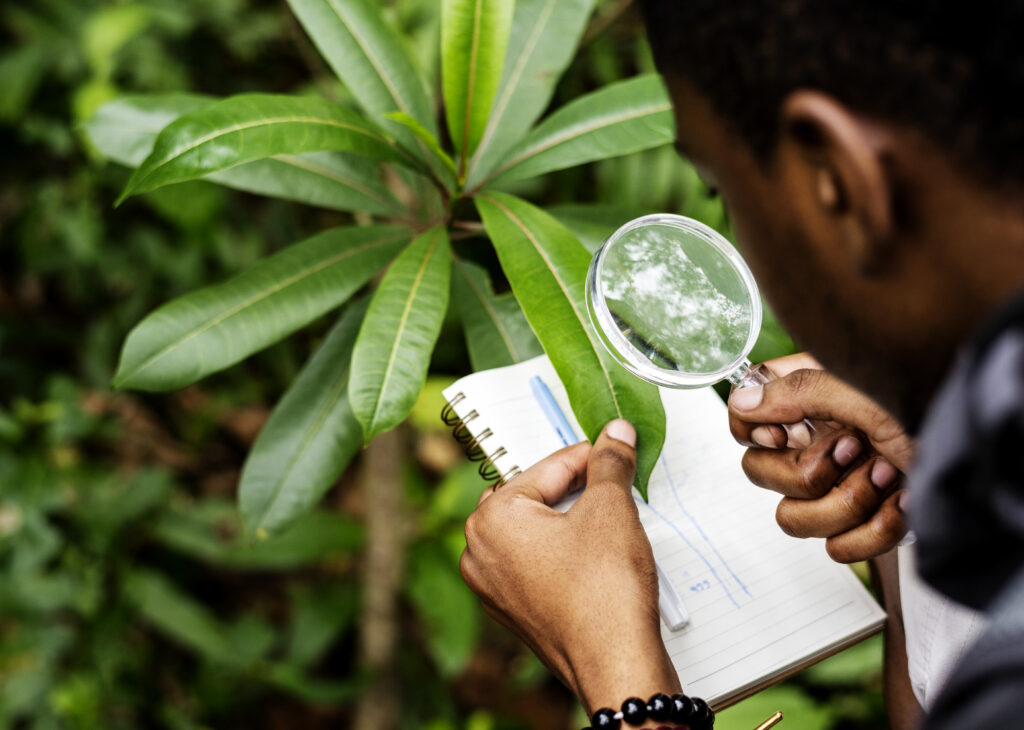By Crystal Maertens
This article covers a topic that is part of Champ Software’s Expert Webinar series, in which subject matter experts present on trending or urgent public health topics.
Thad Shunkwiler, a licensed behavioral health provider who works as a professor in the Department of Health Science, College of Allied Health and Nursing at Minnesota State University in Mankato, presented during a Champ Software Expert Webinar on the impact of THC in marijuana, more commonly known as “weed,” on the developing brain.
Why Discuss the Impact of THC in Weed on Developing Brains Now?
Many states have already legalized marijuana or “weed” for either recreational use, medical use, or both, and still other states are putting this issue on the ballot. We are living in a time when the popular view of marijuana has shifted. As a result of this shift and the increasing legalization of marijuana, young people are gaining access to cannabis products like never before. While the prevailing popular opinion among young people is that marijuana is safe, Professor Shunkwiler stresses that the perception of safety is false where developing brains are concerned. He addressed ways in which health professionals, educators, and parents can combat misconceptions and educate young people on the harm early consumption of THC can have on their brain development.
“There is probably more misinformation on marijuana than any other psychoactive chemical on the planet.” Thad Shunkwiler
Shunkwiler clarified that his presentation goal was not intended to determine whether weed should or should not be legalized. “The legalization of marijuana is a complex issue,” he said. However, he wants to ensure that the correct facts surrounding the chemicals in marijuana are shared and discussed so that informed decisions can be made about how accessible these products should be to consumers, particularly young people.
What is THC in marijuana, and what makes it a psychoactive drug?
Marijuana is a drug that comes from the cannabis plant. It is also known as pot, weed, cannabis, and sativa, among other names, and contains hundreds of psychoactive chemicals. Ultimately, what makes marijuana a drug is one of those hundreds of psychoactive chemicals: delta-9-tetrahydrocannabinol (THC). THC is the chemical that produces the high-like feeling that the user is seeking.
How have shifting attitudes around Marijuna or Weed led to increased legalization?
Said Shunkwiler, “At the very beginning of the conversation around marijuana, the federal government wanted us to believe that this was one of the most dangerous drugs on the planet. They put out several pieces of propaganda. Many of you may have seen the old film ‘Reefer Madness‘ which is factually about as correct as Breaking Bad as a television show on meth. It’s not the real science behind what this chemical is. There was a lot of propaganda to present this negative view of marijuana. I’m not saying that’s a right or wrong thing, but it wasn’t using science to make its argument. It was simply saying, ‘You use marijuana; you’re a bad person. This is the devil’s lettuce.’”
As a result, marijuana was placed on Schedule I of the DEA drug schedule, reserved for the worst and most dangerous drugs. “According to the DEA, it is on the same level as heroin when it comes to control over marijuana,” said Shunkwiler.
As time passed and scientific facts became more widely known and started guiding the conversation, views and attitudes towards marijuana shifted. This accelerated in the past decade or so as many states, led by Colorado and Washington, began to decriminalize and legalize the sale of recreational marijuana. A 2022 Monmouth University poll found that nearly 70% of Americans agree with legalizing small amounts of marijuana for personal consumption.
“That’s a big shift. That’s the pendulum around marijuana,” said Sunkwiler. “So, from my perspective as a researcher, I don’t have an agenda about whether or not we legalize cannabis in any state. The work that I do isn’t meant to influence legislators or policymakers about whether it’s a good idea or not. I appreciate states that let the voters decide, but that’s just my view. My work is almost exclusively on what it means for our young people.”
Does the legalization of marijuana lead to increased use among young people?
“Correlation isn’t causation, but there is a strong correlation between the decriminalization and legalization of marijuana nationally and its use,” said Shunkwiler. Referencing a 2021 Monitoring the Future study of 8th, 10th, and 12th graders across the country, Shunkwiler noted that reported marijuana use among young people in Colorado jumped 13% in the decade after that state legalized marijuana.
Shunkwiler also pointed out that the study shows a strong correlation between the legalization of marijuana and the increased frequency of use among young people. In the decade following states beginning to legalize marijuana, daily marijuana use among young people reached the highest levels ever recorded since the study began.
“Not only are more kids experimenting with the drug because it’s legalized, but we are seeing a higher level of young people using it on a daily or almost dependent level. Across the board, we’re seeing an increase in use,” Shunkwiler said.
While accessibility plays a major role in the increased usage of marijuana or weed among young people, it is not the only contributing factor.
Does the perceived safety of marijuana contribute to increased use among young people?
“When I think of popular culture, I often think of television, movies, music, and the things that young people consume. The media that they consume has created this culture that celebrates marijuana and minimizes the impact of marijuana. We celebrate with Academy Awards and TV Emmys, television and movies that glamorize the marijuana experience,” explained Shunkwiler.
“Ultimately, if I were to pinpoint the number one reason why cannabis use among young people has exploded, it’s this statistic right here: the idea that the drug is safe,” Shunkwiler said.
The Monitoring the Future study has asked young people how dangerous it is to consume a variety of drugs. In the late 1980s and early 1990s, nearly 80% of all grade levels of young people who were measured believed there was a risk in regularly consuming marijuana. That idea of risk began to dwindle as more information about marijuana began to be known and the cultural perception of marijuana shifted. By 2021, the study showed only 20% of 12th graders believed there was a risk in regularly consuming marijuana.
“When you think about the perfect storm of what comes together to create a drug use trend like we’re seeing with marijuana, it’s those three things: it’s accessible, it’s culturally acceptable, and we have an idea that the drug is safe,” said Shunkwiler.
The most common answers to why young people believe the drug is safe, according to Shunkwiler:
- It’s legal
- It’s all-natural
- No one overdoses
- It’s not addictive
- It’s better for you than alcohol
“When young people think a drug is safe, they are much more likely to use it,” Shunkwiler said.
Is the THC in marijuana safe for young people?
The greatest concern around marijuana use among young people is the impact of THC on their developing brains. The brain isn’t fully developed until around 25 years of age. Knowledge of the impact of THC continues to develop and the science is evolving. But what we know now is that marijuana has both physical and physiological effects on the developing brains of young people.
The physical effects of THC on developing brains:
- Difficulty with thinking and problem-solving: THC impacts the prefrontal cortex, which is responsible for making decisions, and creates neurological pathways that create problem-solving difficulties.
- Problems with memory and the ability to learn: Young people develop problems with short-term recall and long-term memory storage. These things have life-long complications. Young people don’t later grow out of these issues.
- Difficulty maintaining attention: Young people today already struggle with difficulty being able to maintain attention; the impact of THC on the frontal lobe exacerbates this issue.
- Reduced coordination: The cerebellum, located on the dorsal surface of the brain, is impacted by THC; even after it’s been metabolized, there is a reduction in coordination. This has life-long implications for a young person’s development.
The mental health effects of THC on developing brains:
Shunkwiler described the mental health effects of marijuana use, “When young people are using marijuana, it correlates with mental health problems, specifically depression and anxiety. The reason that happens is that when cannabinoids are introduced to certain regions of the brain, they can shrink that part of the brain. Depression (chemical depression in the brain) is often attached to the shrinkage of certain areas of the brain. The same regions of the brain that major depression is correlated with are also the same regions of the brain that cannabinoids like to attack and attach to. We see that young people who are using marijuana are much more likely to develop mental health issues.”
While cautioning that there is no data proving causation, Shunkwiler stressed the correlation between marijuana use and long-term mental health struggles: “In addition to depression and anxiety, we know that teenagers who use marijuana are more likely to develop temporary psychosis or are more likely to develop a serious psychosis like schizophrenia.” Shunkwiler described this as stemming from the overactivation or stimulative effect that THC can have on the frontal lobe and sensory cortex.
Psychological Dependence on THC:
While it’s true that marijuana doesn’t create a physiological dependence in the user, where they need the drug to function, marijuana use does create psychological dependence. Psychological dependence causes the user to desire the drug and crave the feeling that the drug provides.
The Impact of THC on School Performance
The THC in marijuana decreases attention, memory, and learning skills. These effects can last for days and sometimes weeks, depending on how often marijuana is used. A young person who has experimented with marijuana, using it only a handful of times, will see a minimal impact on their brain. However, young people using marijuana on a daily or monthly basis will see a much greater impact. Data shows that impact continues into adulthood.
Data shows young people using marijuana are less likely to finish high school or go on to college, Shunkwiler noted.
The THC in marijuana also impacts IQ. Shunkwiler displayed statistics showing that individuals who begin using marijuana earlier than 18 years of age have an average loss of 8 IQ points as adults. Individuals who wait until their brain is more fully developed minimize their IQ point loss.
Behavioral Toxicity of Marijuana Use
“Marijuana possesses strong behavioral toxicity. What that means is that it’s not the drug itself that kills the individual; it’s how they behave when under the influence of that drug,” said Shunkwiler.
Under the influence of marijuana, a person’s coordination, thoughts, and ability to think are negatively impacted. This can cause poor decision-making and accidents.
Shunkwiler added, “Anytime that a psychoactive drug is more accessible, people are going to use it; they’re going to drive, they’re going to go and have falls, fall down stairs, fall down balconies. There is going to be more behavioral toxicity linked to this.”
Is synthetic “marijuana” dangerous?
Shunkwiler also highlighted another danger associated with the perceived safety of marijuana use, and that is a perception of the safety of synthetic “marijuana,” which is actually not marijuana.
“These are man-made or person-made chemicals that were designed to produce a similar type of well-known drug, and they do that because it’s cheap and all the ingredients to make these drugs are accessible. Many times, these chemicals are not even illegal, so they can be sold in smoke shops or literally anywhere. But what young people don’t understand is that when they think about the no overdose, no addiction, and other safety they associate with traditional cannabis, they assume that is also true of synthetic marijuana,” Shunkwiler said.
Shunkwiler stressed that the perceived safety of marijuana cannot be applied to synthetic marijuana. He highlighted an incident that occurred in Mankato, Minnesota, when a 10th-grade girl died after using synthetic marijuana as a result of the chemicals in it, adding, “Spice, K-2, Scooby Snax, or whatever they’re being called on the street, these are just as dangerous as the other synthetic drugs like methamphetamine and fentanyl and other drugs that we now fully understand the dangers of.”
What prevention steps can be taken?
In addressing what prevention steps should be taken, Shunkwiler stressed the importance of delaying the use of marijuana as long as possible: “The more developed the brain is, the less long-term impact this drug may have on young people.”
Prevention starts with education, Shunkwiler said. Young people need to be better educated about the consequences of consuming the THC in marijuana. Young people need a better understanding of the physical, physiological, and mental health impacts that THC has.
However, Shunkwiler acknowledged that understanding the health consequences of THC may not have the biggest impact on a young person’s decision to use marijuana. “If those young people are like me, I thought I was invincible when I was in high school,” he said.
This is why it’s important to also share the practical dangers of the drug, such as the increased risk of car accidents or other accidents, in the same way young people are educated about the risks of drunk driving. It’s also important to highlight the potential criminal consequences, which will vary from state to state.
These conversations are important to start while children are still young. “We have to have these conversations about education early and we have to have them often,” Shunkwiler said. He also stressed the importance of cultivating a family culture around health and how that family culture may be a staying force where knowledge of the consequences alone might not have made a difference. He urged parents to set the tone early by beginning to say something like, “We want to live long and prosperous lives. If we do something like use marijuana at a young age, we are interfering with that value.”


